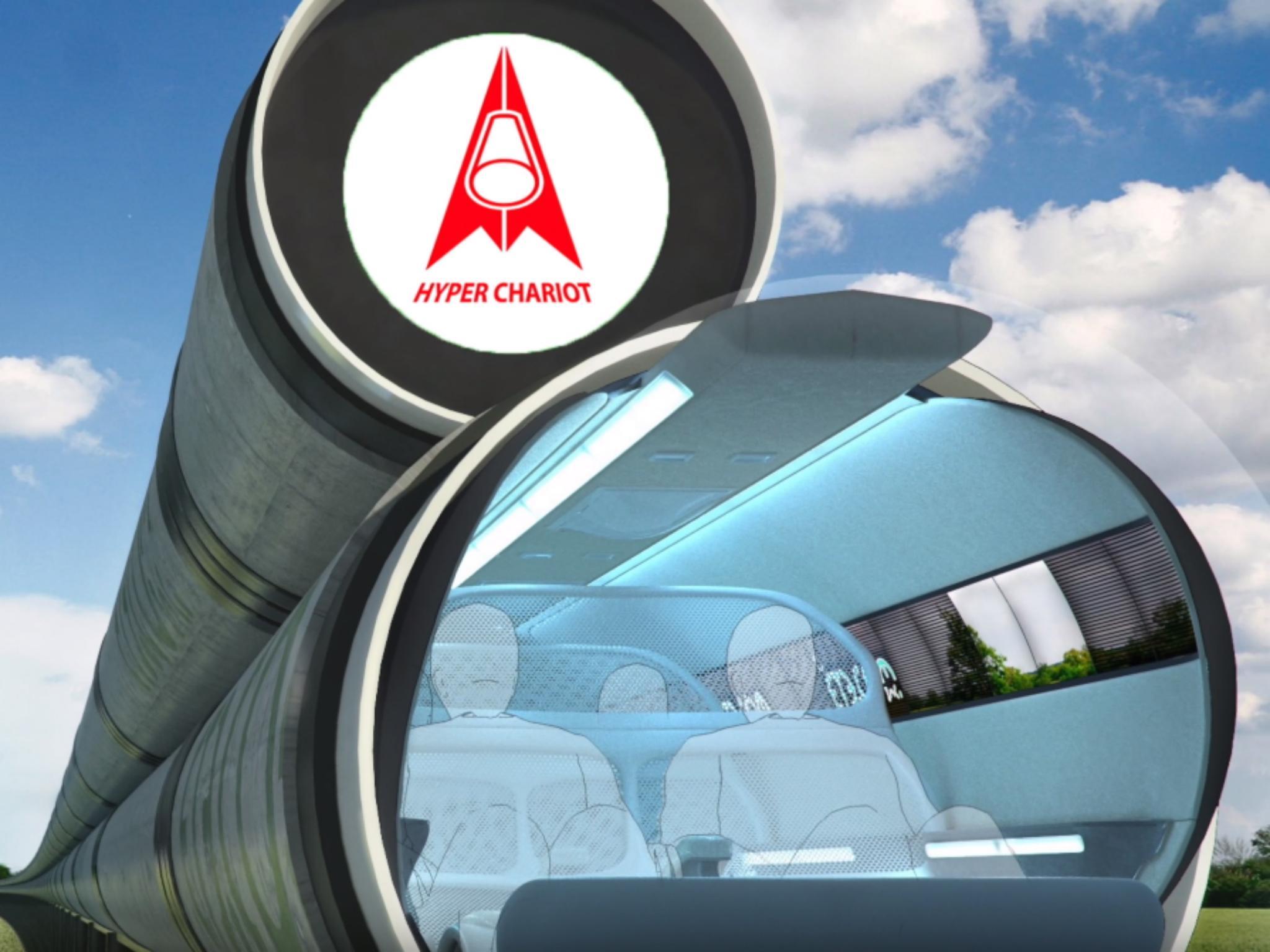Hyper Chariot: 4,000mph pods 'could fly from London to Edinburgh in eight minutes'
The staggeringly ambitious system would apparently also be energy self-sufficient

Your support helps us to tell the story
From reproductive rights to climate change to Big Tech, The Independent is on the ground when the story is developing. Whether it's investigating the financials of Elon Musk's pro-Trump PAC or producing our latest documentary, 'The A Word', which shines a light on the American women fighting for reproductive rights, we know how important it is to parse out the facts from the messaging.
At such a critical moment in US history, we need reporters on the ground. Your donation allows us to keep sending journalists to speak to both sides of the story.
The Independent is trusted by Americans across the entire political spectrum. And unlike many other quality news outlets, we choose not to lock Americans out of our reporting and analysis with paywalls. We believe quality journalism should be available to everyone, paid for by those who can afford it.
Your support makes all the difference.People could soon travel from London to Edinburgh in eight minutes, claims Hyper Chariot, a company that has announced its intention to build an extremely ambitious new transport system.
It would be capable of reaching speeds of 4,000mph, and could also be emission-free and 100 per cent solar-powered, “thanks to the use of solar panels mounted on the outside of the tunnels”, according to the company.
It says it wants the network to be fully operational by 2040, and plans to unveil a working ‘proof of concept’ demonstrator, called ‘The Velocitator’, in 2021.
The train-like technology sounds similar to Hyperloop, the brain-child of Elon Musk.
However, rather than large, bus-like vehicles, it would carry smaller pods capable of interchanging “like cars on a motorway”, with passengers able to choose their destination.
Each pod would be driverless and carry a maximum of six people, who would have to be seated in “F1 car-like” positions.
“The ‘Hyper Chariot’ uses roller coaster-type technology to catapult car-sized capsules through airless concrete tubes at five times the speed of sound,” says the company.
“The entire transport system will be energy self-sufficient thanks to the use of solar panels mounted on the outside of the tunnels, and an ingenious method of recapturing the energy used to accelerate the pods through linear regenerative braking.”
The pods would apparently travel through 5ft-wide airless tubes made of 1.3cm-thick reinforced concrete, and float above rails “using a new type of magnetic levitation , or ‘maglev’, with cryogenically-chilled superconductors that create what is known as ‘quantum levitation,’ which uses no energy or movement of the vehicle to maintain the suspension gap”.
Furthermore, Hyper Chariot claims fares from London to Edinburgh would cost a mere £100, but warns that there will be no toilets on board.
“I met with Elon Musk prior to the announcement of Hyperloop Alpha in 2013, and we both share the same vision of electrifying the earth,” said Hyper Chariot founder and CEO, Nick Garzilli.
“But with Hyper Chariot leading the field, we can do it in a much more elegant and efficient way.
“Hyper Chariot’s network will provide the personalised mobility of a car without the headaches of traffic and parking. Also you’ll no longer have to wait with large groups of people for a bus, train or plane.
“Hyper Chariot can be integrated into the existing road infrastructure at much less cost and disruption to existing services while providing more value to users.”
Join our commenting forum
Join thought-provoking conversations, follow other Independent readers and see their replies
Comments